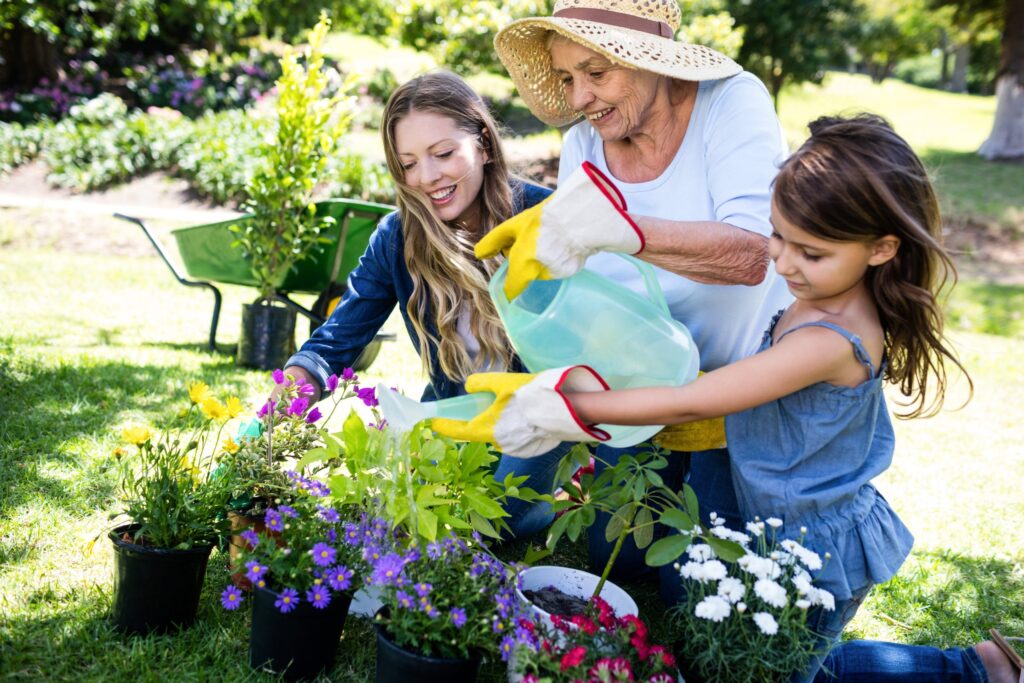In the ‘good old days,’ Dad and Mom would head off to the fields or factory to work while Grandma and Grandpa kept an eye on the kids. The kids would develop strong relationships with their grandparents. These days, life is a little different, because people are living longer. Mom and Dad may still head off to work, but the kids are in daycare or school and Grandma and Grandpa may be off on a cruise with Great-Grandma and Great-Grandpa. Many families are separated by states or nations, connected only by the Internet, as parents and grandparents relocate for better job opportunities. More and more young children don’t have the daily contact with seniors that was common in the past. That’s not good — for the children or the seniors.
Benefits of Intergenerational Programs
Seniors who work with children benefit in many ways, for example:
- They learn new ideas, technologies, and even slang from the kids, all of which improves their brain health.
- Older adults can burn 20% more calories per week by regularly volunteering with children.
- Seniors who regularly volunteer with children also experienced fewer falls, need canes less often, and do better on memory tests than those who do not.
- The memory, cognition, and physical health of people with dementia and other cognitive impairments improve during interactions with children.
Seniors aren’t the only ones who benefit; the children do, too, for instance,
- Children’s reading scores improved in schools where older adults were regularly present.
- Studies have found that interacting with seniors helps young people develop communication skills, social networks, a sense of purpose, commitment to community service, and positive attitudes toward aging.
- Children involved in intergenerational mentoring programs are 46% less likely to begin using illegal drugs, 27% less likely to begin using alcohol, and 52% less likely to skip school.
- Interaction with older adults also enables young people to develop positive role models.
Intergenerational Business
The Gralia family, who began and continue to run The Arbors Assisted Living Residential Communities, are fully aware of the benefits of intergenerational relationships. Cousins Amie Hanrahan and Sara Robertson, who now hold the reins, remember spending their spare time at The Arbors mowing lawns and talking to residents when they were children.
Intergenerational Programs at The Arbors Assisted Living
After experiencing the benefits of intergenerational interaction themselves, they wanted to make sure the residents of their assisted living communities enjoyed them, too. So they began to develop programs, first with children from their own Arbors Kids childcare centers in Chicopee, Springfield, and East Longmeadow and children from nearby neighborhoods as well. “We bring the children over to the communities several times throughout the year for holidays,” explains Amie Hanrahan, regional executive director. The children trick-or-treat for Halloween and pick pumpkins from the pumpkin patch in the courtyard of most locations. For Easter, they visit the Easter bunny, and for Christmas, Santa. During summer camp for Arbors Kids, the children visit to watch a movie or do crafts with residents. “Some kids don’t have grandparents in the picture, so it’s nice to see them interact together,” Amie says. The programs were so successful that The Arbors communities began inviting other childcare centers, Girl Scout troops, and dance studios over to participate in activities with residents or perform. “It’s nice to see them interact. The residents really enjoy it,” notes Amie.

